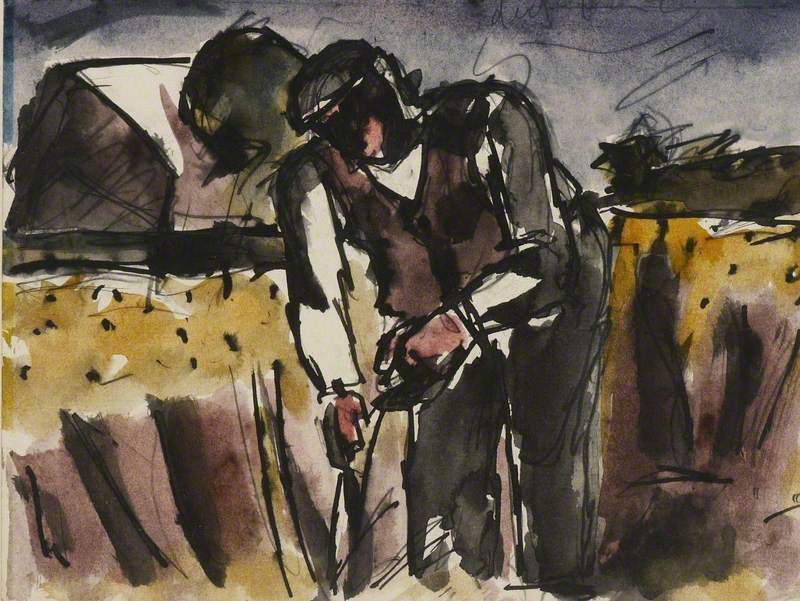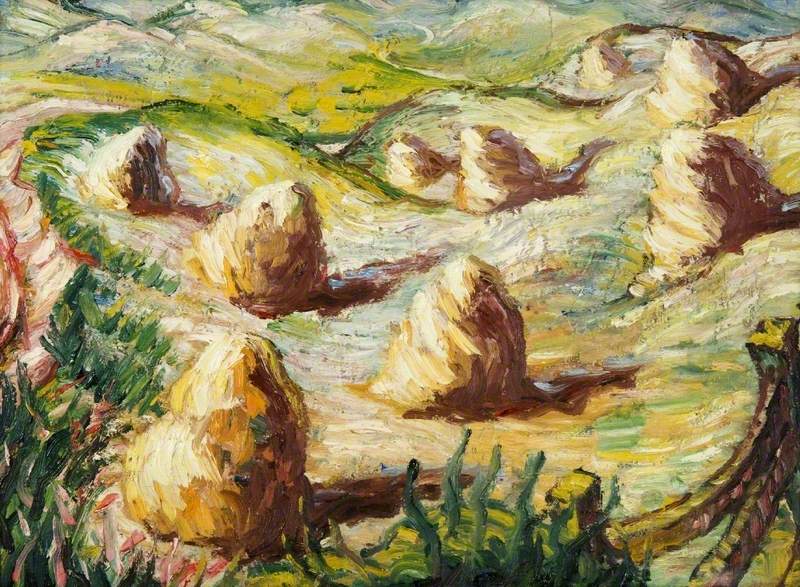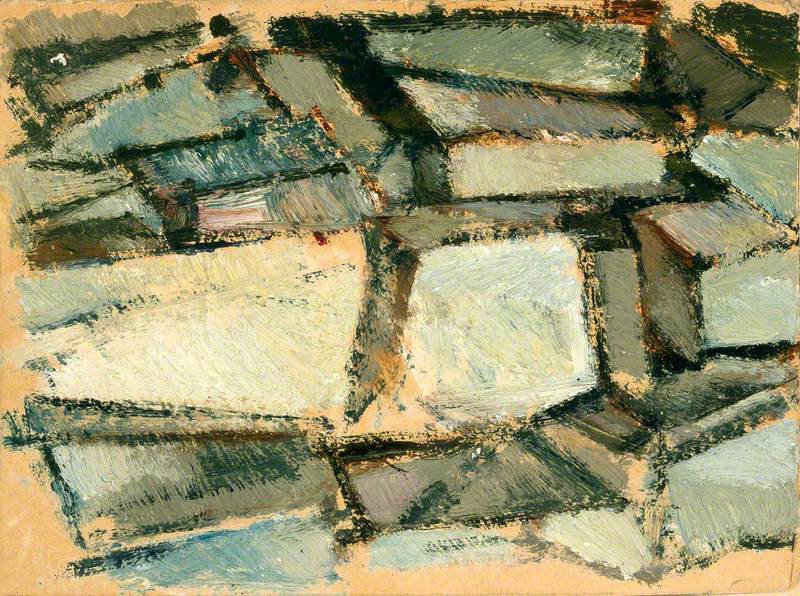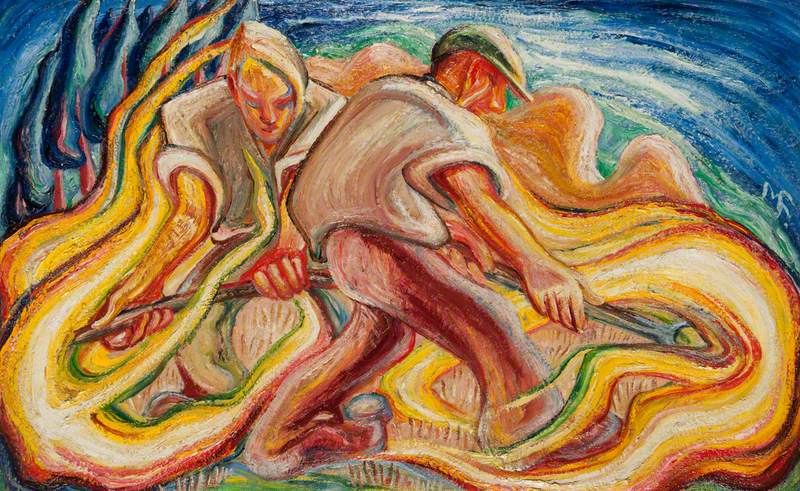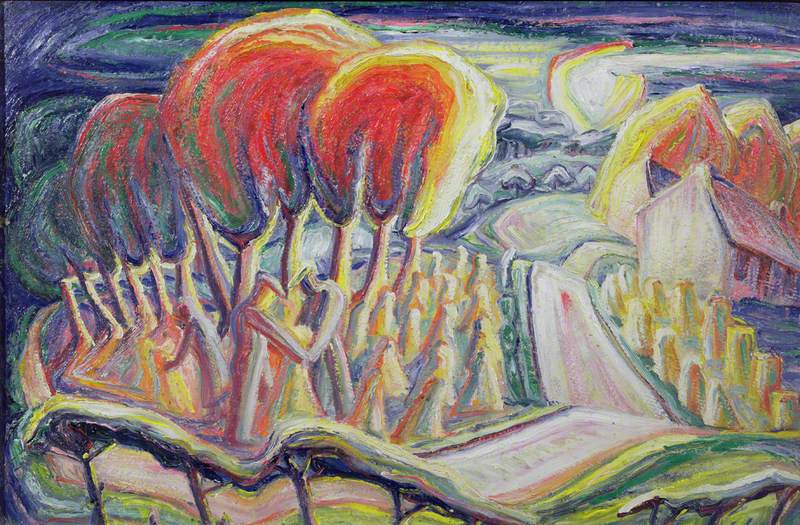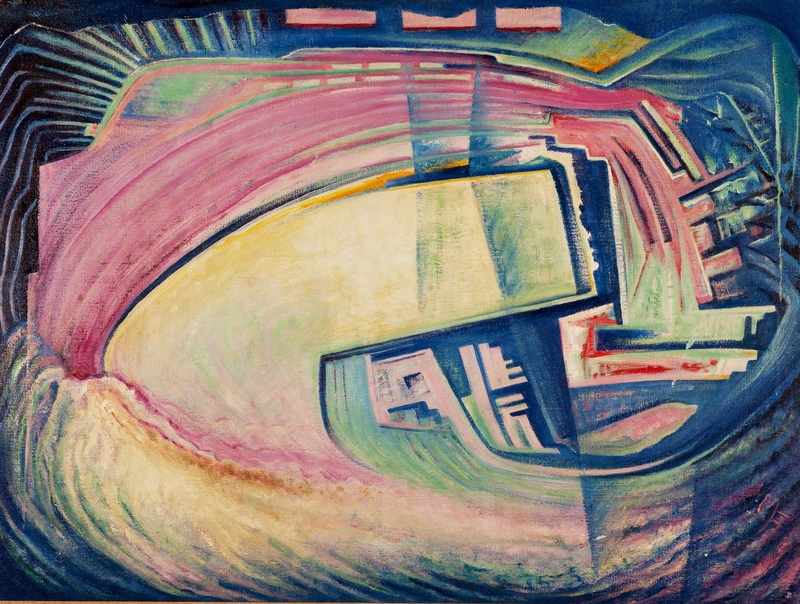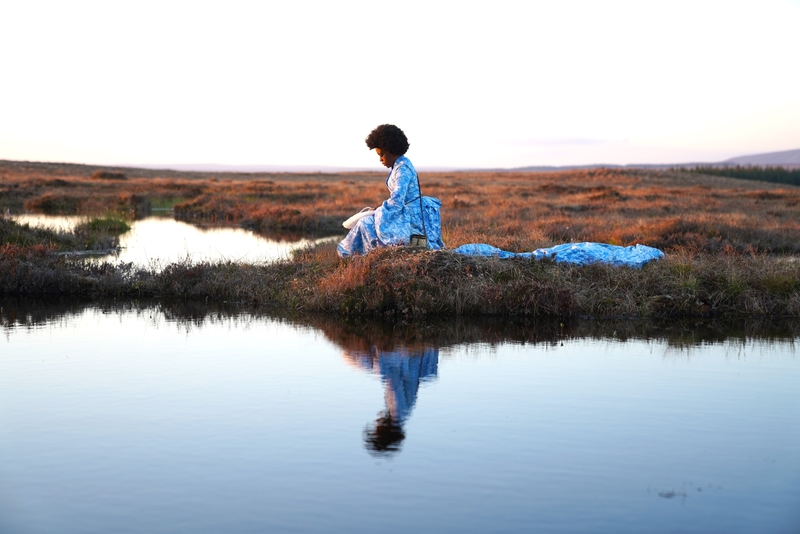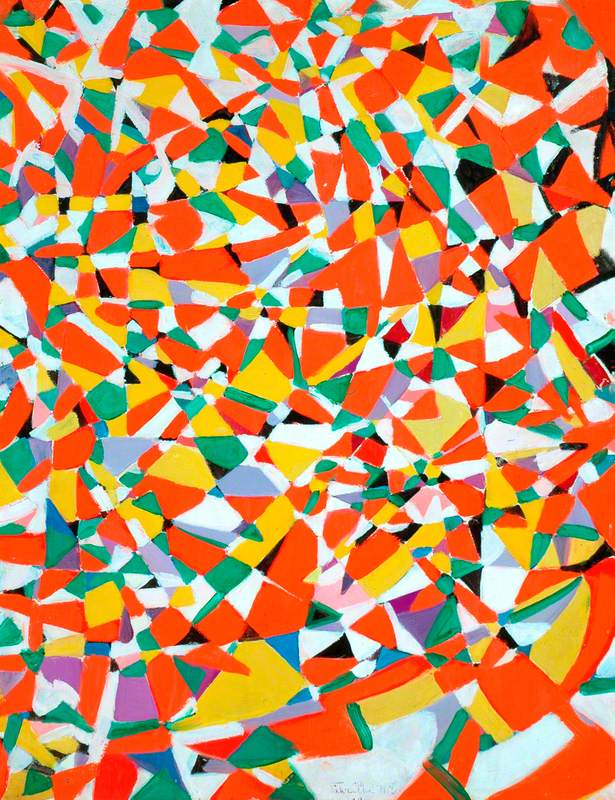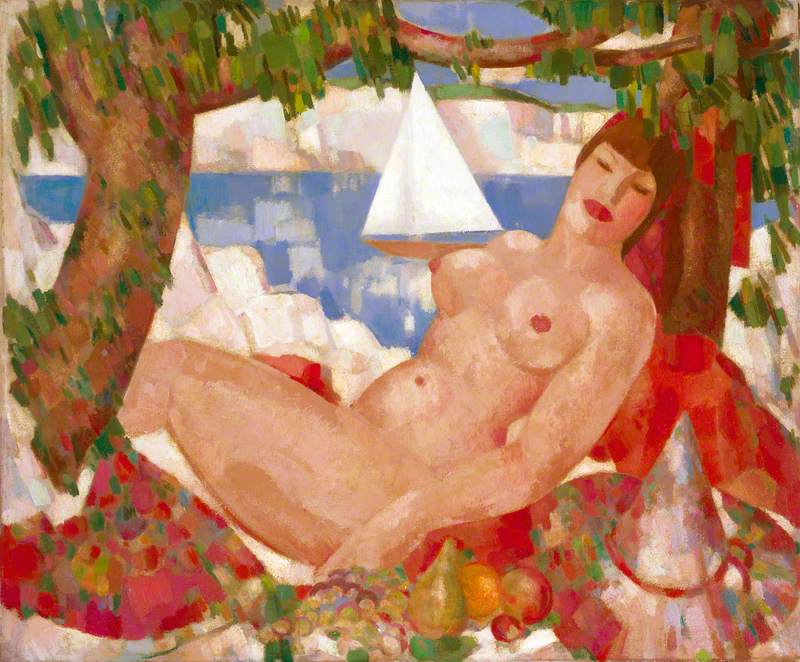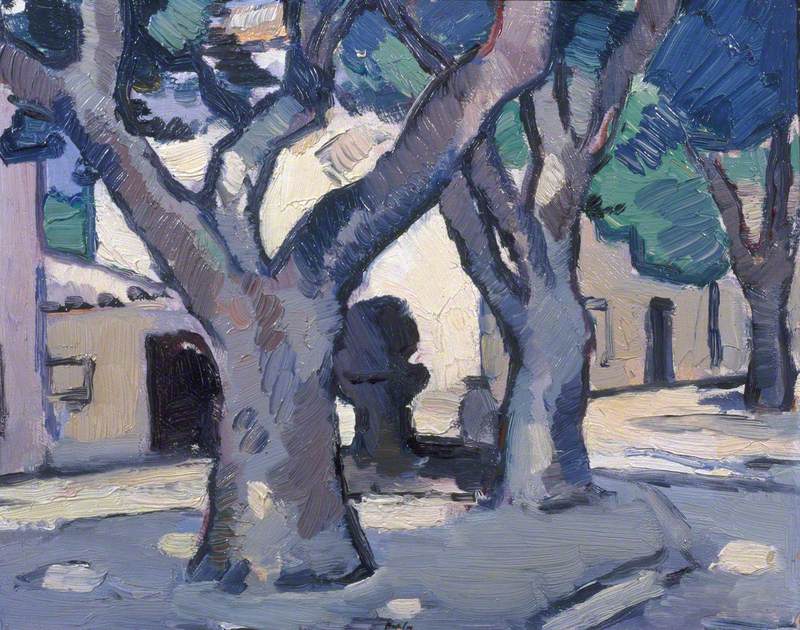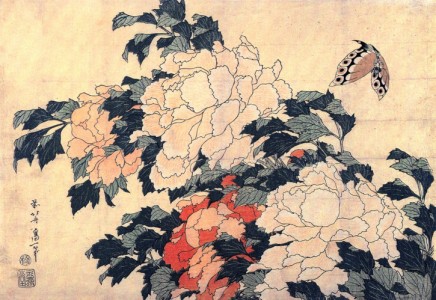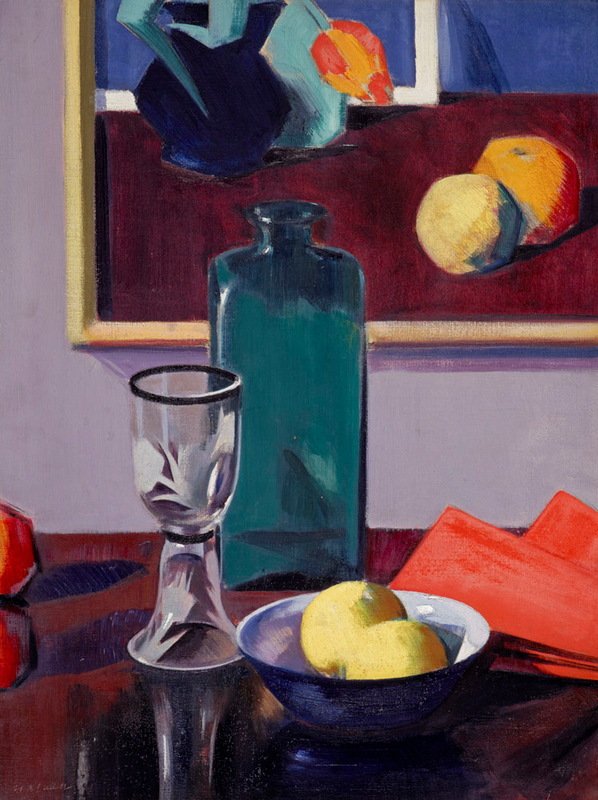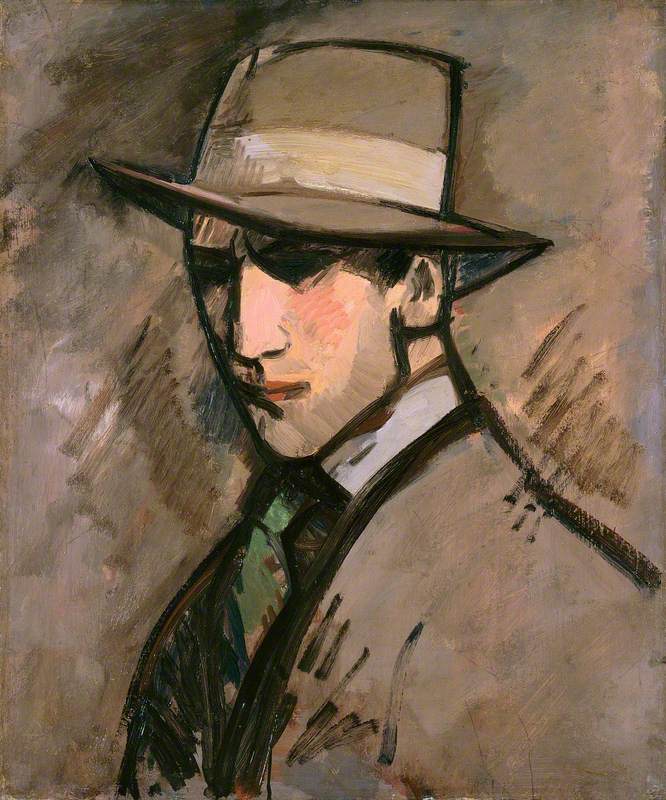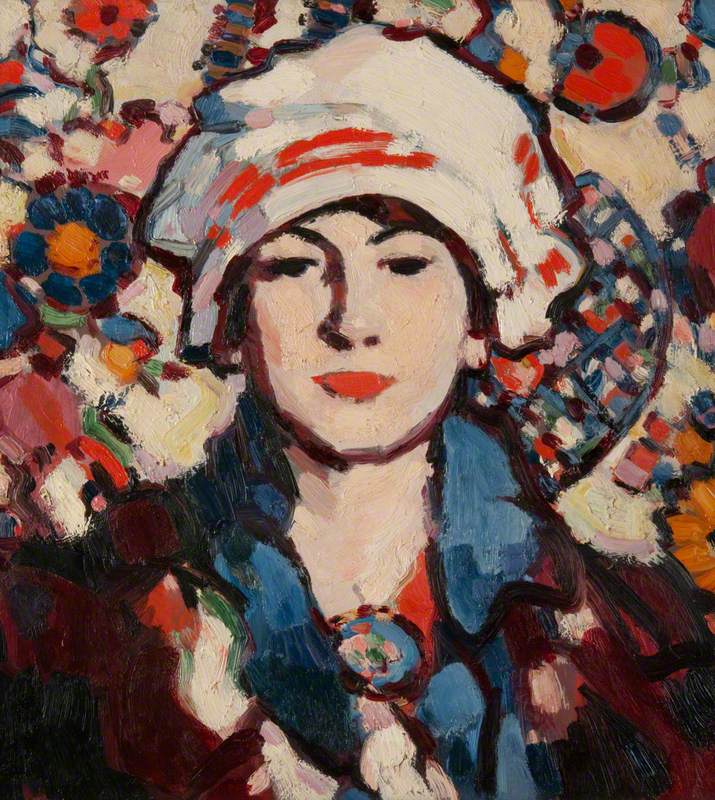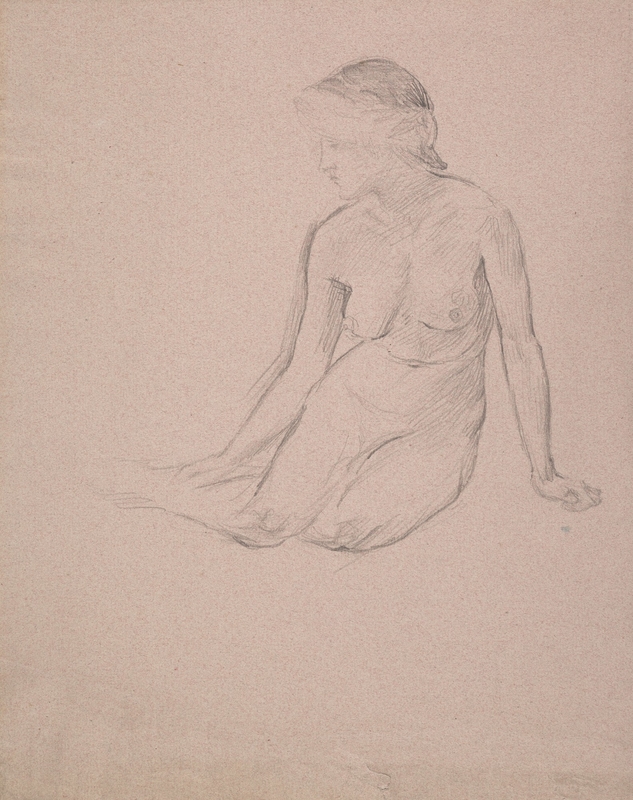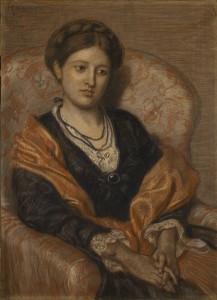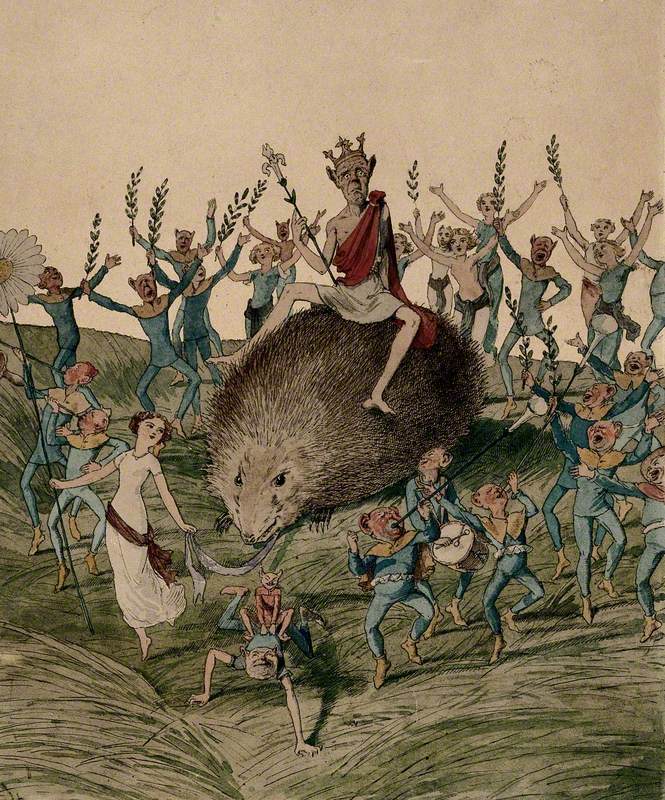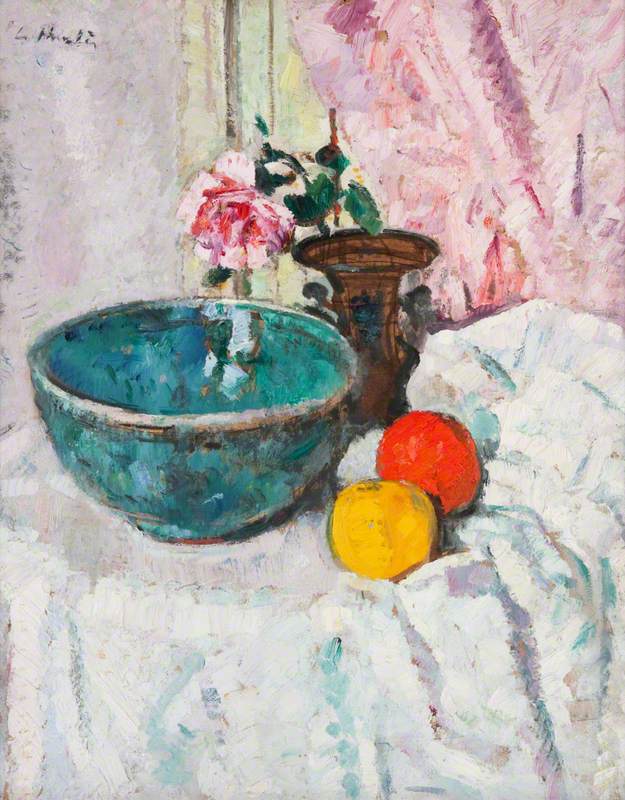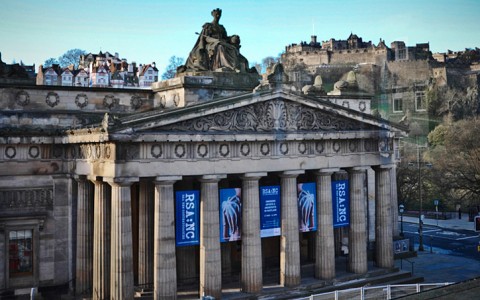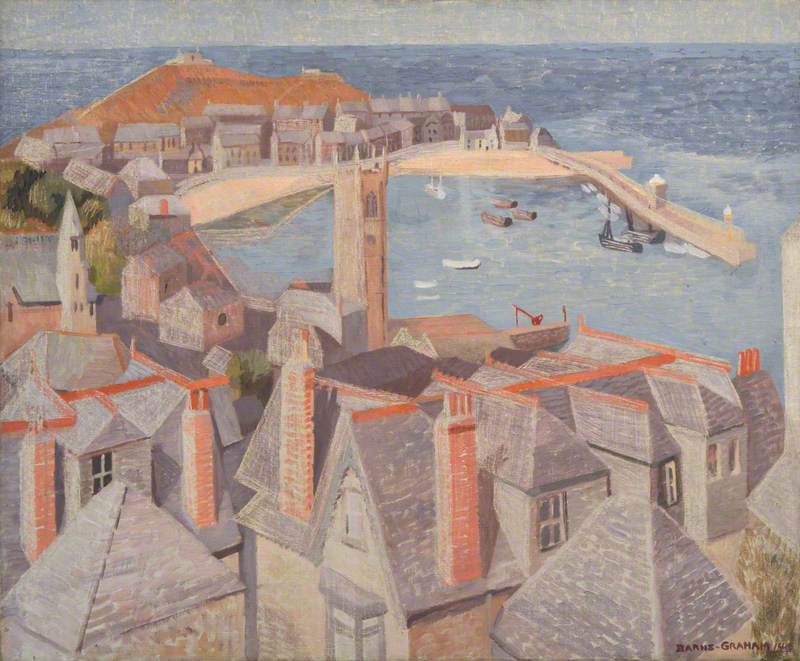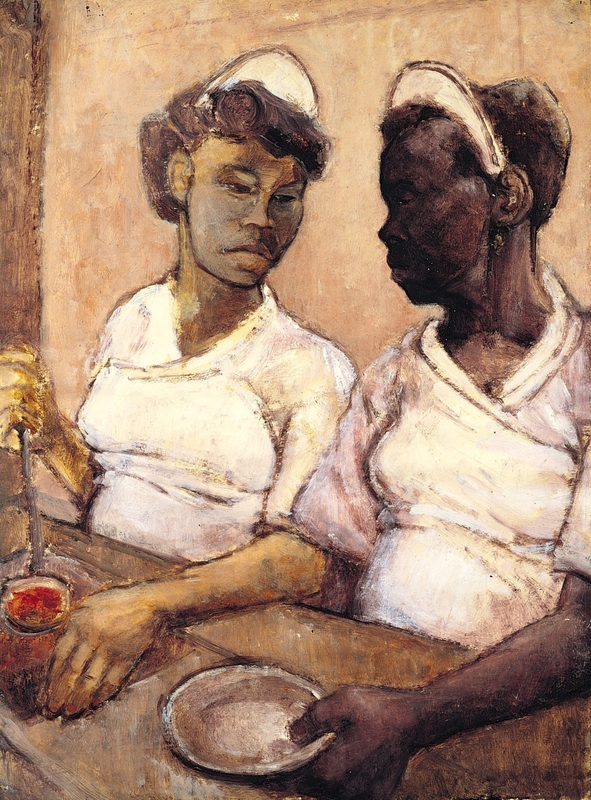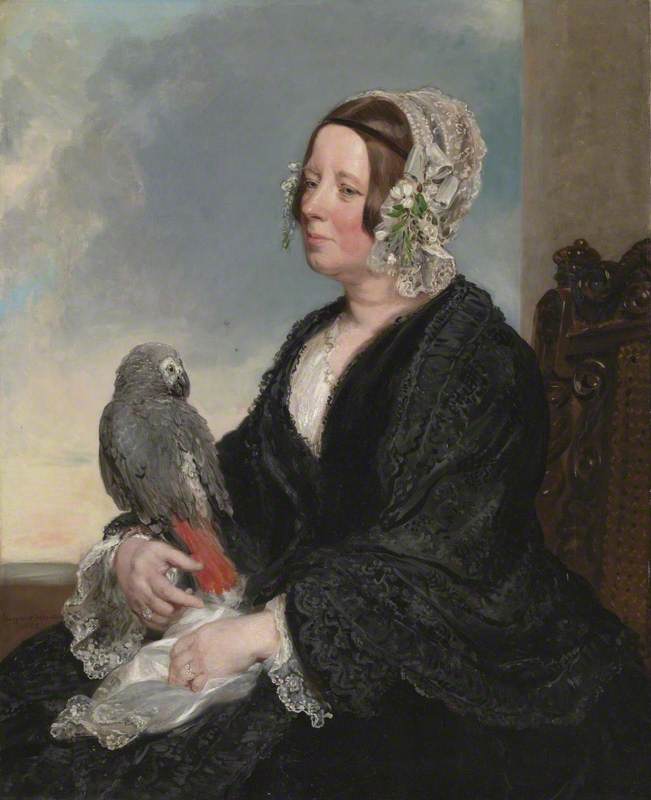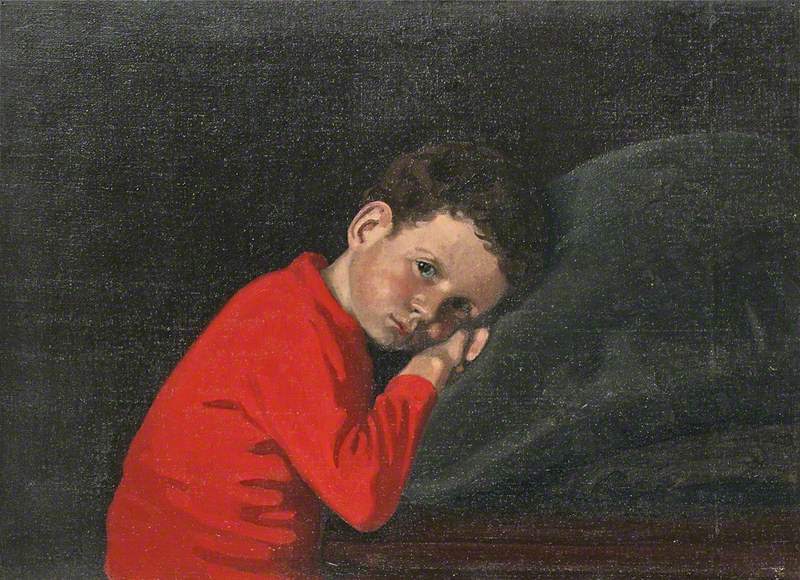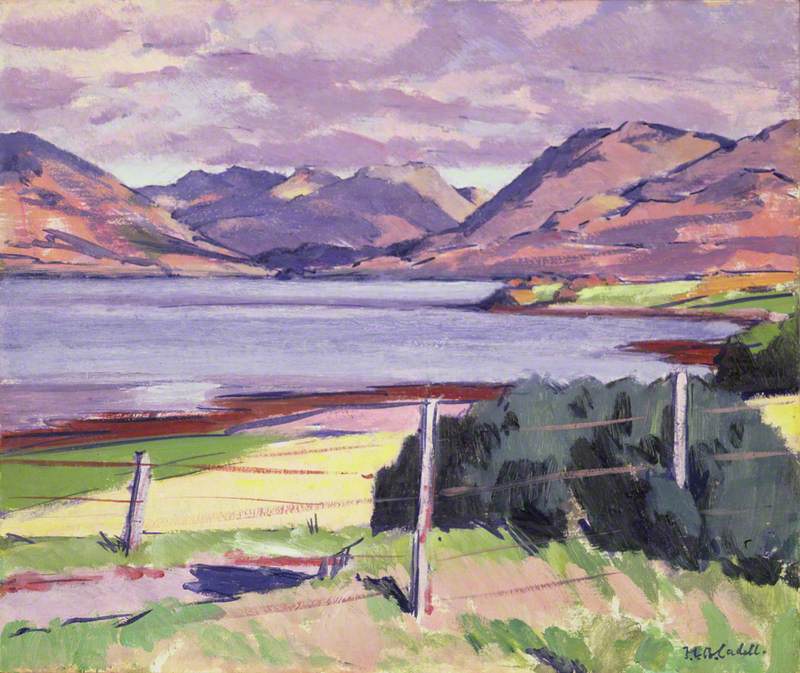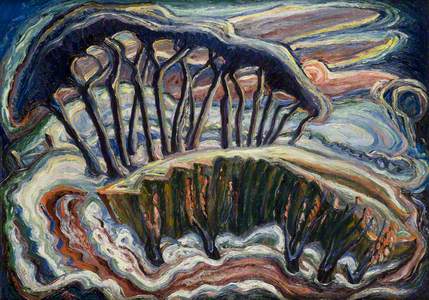Millie Frood is a name rarely mentioned when we talk about important Scottish painters. Nevertheless, her style and mastery of colour should earn her a place among the greats.
Born in Motherwell in 1900, Millie Frood lived in North Lanarkshire all her life. She studied at Glasgow School of Art and subsequently became a teacher at Bellshill Academy, all while painting and exhibiting her work.
Frood was well known in her community and was easily recognised thanks to her distinctive style – often adorned in feather boas and mod-style boots. To her neighbours, she was known to be a gregarious and generous person by nature, often sharing her creativity with others through tours of her studio. Millie Frood passed away in 1988.
For those unfamiliar with Millie Frood and her work (sadly perhaps the majority), the first thing to notice is the energy within it. Rich and sometimes unusual colour palettes meet frenzied but lyrical and purposeful brushstrokes, creating a uniquely Scottish-expressionist style. Indeed, Frood was heavily influenced by expressionist painters coming out of Europe in the post-war period and was noted to keep company with the likes of Josef Herman and Jankel Adler along with some Scottish heavy hitters like Margaret Morris and J. D. Fergusson.
This melting pot of European expressionism and Scottish Colourism comes together perfectly in Millie Frood's art. She should be thought of as a local cosmopolitan of sorts, looking internationally outwards for inspiration, but always returning to her roots in North Lanarkshire to depict fresh views of Scottish landscapes and its people.
Frood was a founder a member of the New Scottish Group, a collective which helped revitalise the Glasgow art scene in the 1940s and 1950s. Borne out of those various artistic influences entering Glasgow at the time, the New Scottish Group became known for their bold colours and shapes. In an article by journalist William Power, he states that to find a painting by this collective, one need only 'follow the gleam'! Another critic, albeit more negatively, speaks of 'the shouting of the too-prevalent flame colour' which seemingly was a favourite among members.
In any case, Frood was part of an arts collective increasingly known for being bold in their artistic choices. Alongside Frood, members such as J. D. Fergusson, Margaret Morris and Louise Annand showed work together regularly up until the late 1940s, predominantly in McClure's Gallery on Wellington Street, Glasgow. Although activity wound down in the late 1950s, members of the New Scottish Group supported each other throughout their careers.
In 1958 Frood showed a number of works in Airdrie Library, and J. D. Fergusson opened the exhibition. He was 84 at the time and his fame as a Scottish Colourist definitely drew attention. His presence is even noted in a rather entertaining review of the exhibition for the Motherwell Times, where Fergusson is described as 'surfac[ing] like the coelacanth', that is, like a prehistoric fish, to support and sustain younger artists like Millie Frood.
Frood did sadly not sell much during her lifetime due to – what Louise Annand deemed as – her work being way before its time. Her art did have a somewhat 'modern' feel; the figures are angular and uncanny in places, and the colour scheme is often otherworldly. This unusual approach may have alienated some contemporary viewers. In the same review that called J. D. Fergusson a 'coelacanth', Millie Frood's work is referred to as 'grotesque fantasies' hailing from a 'distorted imagination'. This critic clearly had a conflicted reaction to Frood's display in Airdrie Library, oscillating between awarding the work a certain validity or condemning it to insanity.
Despite the scathing comments about Frood's work, the Motherwell Times article does offer an interesting insight into one of the paintings held in the North Lanarkshire Council's art collection, Turning Hay.
This painting, showing two farm labourers at the task of working the hay field, is a striking depiction of rural labour. The critic was taken by the fury with which Frood's workers seemed to move, and wrote they were surprised that the gallery wasn't 'knee-deep in agricultural produce'.
This certainly rings true of the energy Frood instilled in the scene. Here, farm workers strive towards abundance, offering us a cornucopia, not merely bales of hay. Her masterful use of colour furthers this; the golden yellows make the hay itself appear as precious, golden thread being woven together by the hay turners. Through this the workers are elevated: there is pride and dignity in the work as all are swept up in this golden, cyclical movement of nature and man, and their symbiotic relationship.
The relationship between humans and nature is demonstrated well in another of her paintings, Workers in a Field, held by The Fleming Collection. Not obvious at first, but in amongst the angular hay piles are three workers: all are the same colour palette and blend into each other, becoming one.
Frood returned to themes of farm life and farm work throughout her career, but always with a twist. There is no rural idyll to be found here. Often, there is an industrial or mechanical edge to her work, or at least a certain frenzied energy which speaks to that feeling of fury felt by the critic from the Motherwell Times. Some scenes feel embattled, and this is the case in On The Farm (below), another painting held by North Lanarkshire Council.
This more abstract work seems to depict farm machinery or a building emerging out of ploughed, irrigated fields around the edges of the canvas. The contrast between flowing lines and angular shapes shows us the clash between nature and industry, with industry appearing triumphant, bursting out of the centre of the scene. Frood's unusual blues and pinks, not typical of farm life, abstract the scene further, transforming this farm work into an otherworldly activity.
Millie Frood had a fantastic range between figurative and abstraction and experimented on this scale throughout her career. This ability to adapt her style, her control of and flair for colour and her lively brushstrokes show Millie Frood as a true tour de force of painting in Scotland. Louise Annand said Frood's apparently 'very well-groomed appearance…belied a forceful passionate belief in painting.'
Millie Frood sadly did not receive the fame she deserved during her lifetime. Overshadowed by her male contemporaries, it wasn't until after her death, that Frood gained wider appreciation in Scotland. In 1989, Glasgow-based Gallery owner Cyril Gerber exhibited some of her works in an exhibition titled 'Paintings in the Forties'. The tagline for the exhibition read 'members of the New Scottish Group and Millie Frood Studio', placing Frood's work firmly at the centre of the show.
Most recently, the painting Workers in a Field, loaned by The Fleming Collection, was shown at Dovecot Studios, Edinburgh as part of their exhibition 'Scottish Women Artists: 250 Years of Challenging Perception'. All this suggests a gradual, positive movement towards recognising Millie Frood as an important twentieth-century Scottish painter.
Millie Frood is just one example of the many Scottish women artists who have been overlooked and who deserve more recognition and celebration.
Rosie Shackleton, Assistant Curator at North Lanarkshire Council
'Strange Horizons' – the first retrospective of Frood's work – will be open to the public from 3rd February to 6th May at North Lanarkshire Heritage Centre, in Frood's home town of Motherwell

